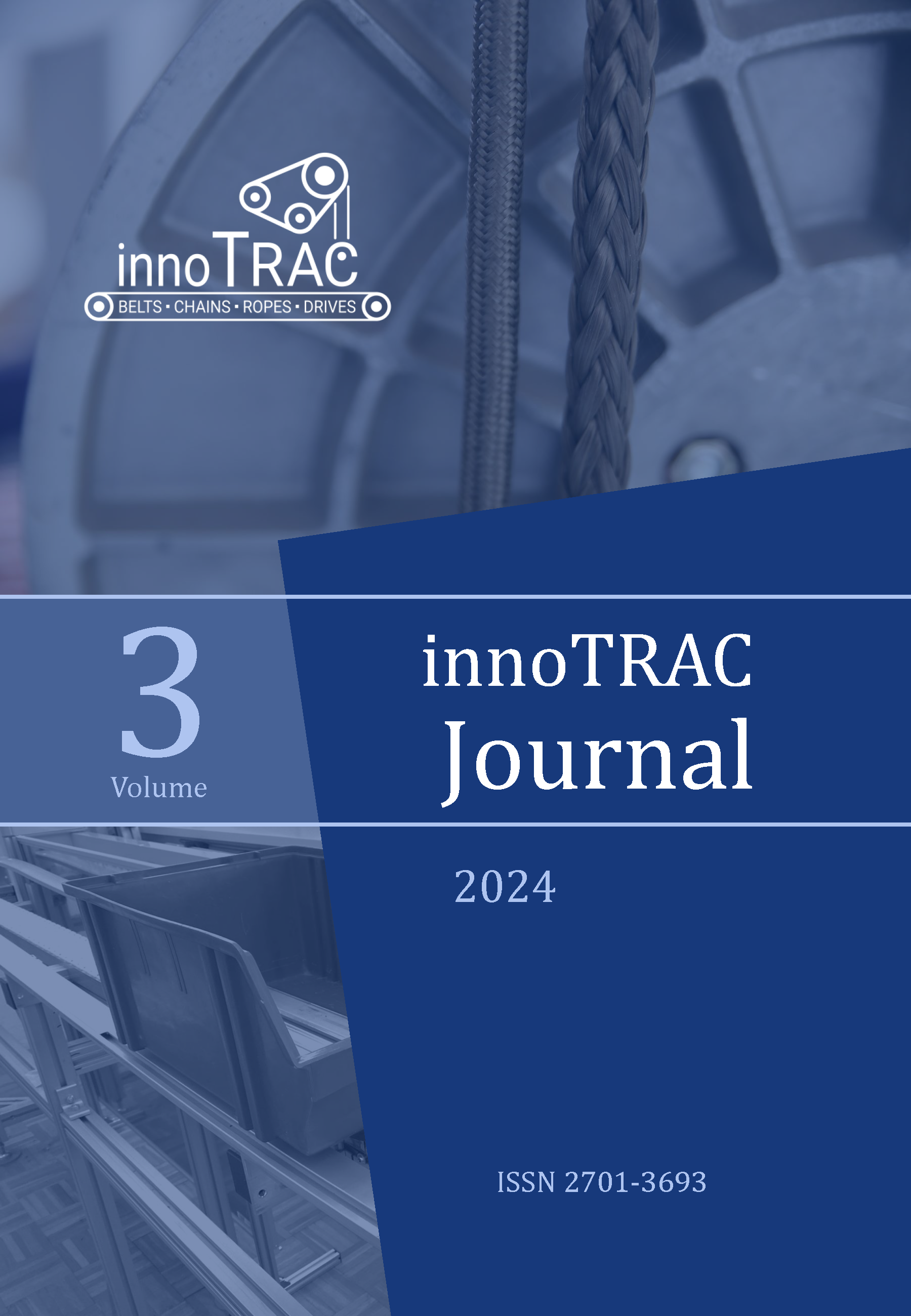Some aspects of modelling the coupled thermo-elasto-plastic behavior of a coating-rope-pulley system for bending fatigue analysis
DOI:
https://doi.org/10.14464/innotrac.v3i1.772Keywords:
Coated wire ropes, Thermo-mechanical analysis, Fatigue, Stress-Strain State, Finite Element Method, Archimedes-Screw-like transformation, Ansys Parametric Design Language, Nodes coupling, Volumetric heat source, Taylor-Quinney coefficientAbstract
Conducting a reduced multiple factor experiment, bringing a coating–rope–pulley system to a critical state due to cyclic bending and creating a family of predictive S-N curves requires, among other things, availability of reliable, quickly implemented mechanisms for intermediate control and accounting of special features of the mechanics and tribology of a process at the meso level. The implementation of this kind of mechanisms is possible on the basis of coupled FEA.
The paper discusses some aspects of modeling the coupled thermo-elasto-plastic behavior of coating and rope materials, contacting as a system with a rotating pulley. A distinctive feature of mentioned process is the presence of a technical contradiction, which consists in the fact that, under certain initial and boundary conditions, a coating provides a more favorable composition of a stress-strain state (SSS), resulting in an increase in the number of bending cycles. On the other hand, a coating heat insulator material may begin also to intensively interfere with convective removal of heat, generated in an elasto-plastically deformable rope, which entails a change in the dynamics of contact, the properties of coating material and a deterioration in the overall picture of SSS. This may result in a reduction in the number of endurable cycles. Thus, the creation of a FE-tribo-mechanical model is focused not only on obtaining a predictive tool for estimating the lifetime, but also on finding technically advantageous conditions for testing or operation.
As a mechanism for a verification of the FE-model, it is suggested to use experimental diagrams of normal and tangential force distribution along the groove of a pulley, diagrams of thinning of a coating wall, azimuthal inhomogeneity of a rope external diameter and a thermal response of a system.
Downloads
Published
How to Cite
Issue
Section
License
Copyright (c) 2024 Ivan Pechenizkiy

This work is licensed under a Creative Commons Attribution 4.0 International License.
All articles will be published open access under the license Creative Commons Attribution 4.0 (CC BY 4.0).

